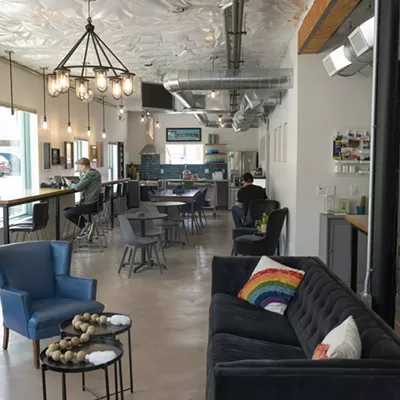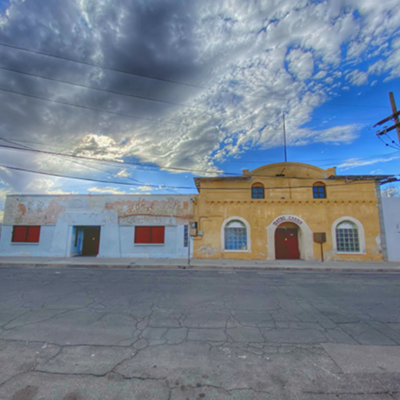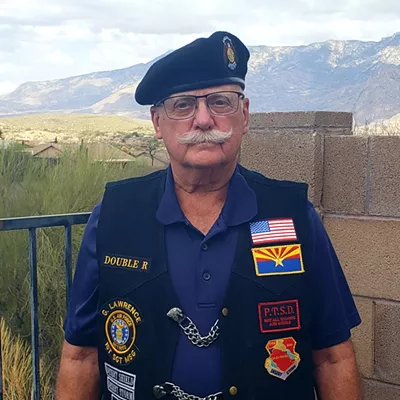That, however, may finally change before the end of the year.
The concept behind the GSI is to tunnel one arterial roadway under another to smooth the traffic flow at major intersections. By doing this, transportation planners argue, the need for a mega-expensive cross-town freeway is reduced. Critics, however, contend congestion problems would be shifted to the next intersection and the disruption caused by construction of the costly projects would be unbearable.
Back in 1979, the idea was floated to build a series of GSIs, or "bantam interchanges," as they were then called, along Broadway Boulevard. When the voters were asked to support the concept and approve $6 million in bond funds to pay for one, they said no by a better than 3-2 margin.
After that initial defeat at the ballot box, both Mayor Lew Murphy and Councilman George Miller indicated that they thought the concept was dead. City transportation officials, though, insisted it still had to be considered.
Seven years later, GSIs were back before the voters as part of a push to raise the sales tax, mostly to pay for transportation changes throughout the metropolitan area. Nine GSIs were slated to be constructed inside the city limits, but again, the voters overwhelmingly said no.
That didn't stop the traffic planners, and in 1990, seven GSIs costing at least $60 million were part of an attempt to raise the sales tax to pay for multi-modal transportation improvements. Once again, the voters said no by a wide margin.
Even that didn't kill off the concept. Twelve grade-separated interchanges continued to be proposed inside the city limits on the Regional Transportation Plan, which was prepared and adopted by the Pima Association of Governments. Six of the GSIs were along Broadway Boulevard with four others on Grant Road.
Then last year, three of the interchanges--each costing $20 million or more--were slated for implementation under another proposed sales tax increase. While Mayor Bob Walkup tried to rename them "Continuous-Flow Intersections" to give the idea more PR pizzazz, the voters again flushed the concept, this time by more than 2-1.
With four strikes, and combined with ever-rising implementation costs and reduced revenues, the message may finally have gotten through. A committee of the Pima Association of Governments is now looking at removing the GSIs inside the city limits from the Regional Transportation Plan, which runs through 2025.
While reluctant to talk about it, both PAG and city officials indicate it is a matter of economics combined with a lack of community support. But, they say, removing them from the plan now doesn't mean they won't be back as a proposed transportation fix sometime in the future--if the public can be won over.
As part of its current overall assessment of the transportation plan, PAG is conducting computer modeling on the impact that eliminating the GSIs would have on traffic congestion in Tucson. Once that study is completed, the results will be analyzed and a recommendation made to the PAG Regional Council, probably by the end of the year.
According to Jim Glock, Tucson's transportation department director, the city staff agreed to the removal of the GSIs.
"It was because of financial constraints," he said. "If we don't build them, we can afford to do some arterial widenings in the central city. We'd rather focus on bringing those streets up to urban standards."
Walkup is Tucson's representative on the council, but he didn't return phone calls seeking his view.
Local merchant Britton Dornquast, of Hear's Music, hopes the decision is to get rid of those grade-separated interchanges proposed for the central city. His business was directly threatened last year by the political push to install a GSI at Campbell Avenue and Grant Road.
"They're bloody expensive and the question remains about what happens at the next traffic light down the street." Dornquast said, adding that during the two year construction period, surrounding merchants would be in a deep hole.
City Councilman Fred Ronstadt isn't sure he's ready to throw in the towel on GSIs. He cites a transportation study the city is planning to do. "Let's not x out any option. Until the alternatives are known, don't presuppose any option."
Longtime GSI critic John Kromko has a different perspective.
"I'm happy to hear about it," he said of the proposal to eliminate the interchanges from the PAG plan. "This is a much more honest approach. I'm glad it seems it's going to happen."








